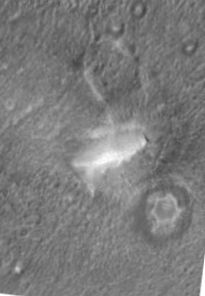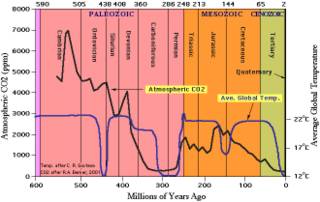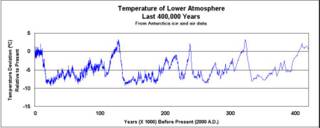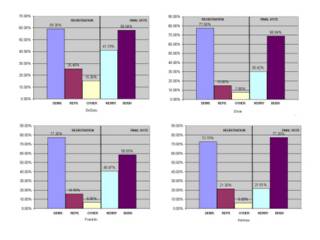
Malinkovitch Curve vs. Vostok Ice Core Data 
I made a temperature prediction in the previous post by replicating the previous glacial cycle. I knew this was not the best approach because the cycles, although similar, are not exactly the same, so I went looking for a Malinkovitch curve estimated from the astronomical data. It took me awhile to find one that I could post, but I finally found one which is posted above and compared to the Vostok Ice Core Data. The Malinkovitch curve came from this article: No soon Ice Age, says astronomy. In it Czech astronomer Jan Hollan predicts no ice age for at least 130,000 years.
His prediction is based on the curve above which shows no periods of extremely low insolation at latitude 65N for the next 130,000 years (the presumed driver for continental glaciation). There appears to be the possibility of an extended interglacial age.
I noticed several interesting things about these curves. One is that the first peak I show on the Malinkovitch curve above, appears to have had almost no affect on temperature. This peak occured during one of the coldest epics, but did not spur an interglacial. The third peak on the curve did spur an interglacial, but it was not that much higher than the first peak which is also higher than the peak that spurred the current interglacial epic.
A fair correspondence between the Malinkovitch curve and temperatures in the last 100,000 glacial cycle is evident. The details of the curve which don't match the Malinkovitch cycles are probably related to sunspot cycles and biofeedback.
It appears that most of the decrease in solar insolation from its peak at the beginning of our currrent interglacial has already occured. Only a small decrease compared to what has already occurred is in store for the future following by another rise in less than 500 years. Since only a small decrease in temperature has occured since the Holocne interglacial maximum, it is probably not reasonable to expect any precipitous temperature drops in the near future, as I speculated earlier. Clearly then, there are changes in Earth's climate system which have caused the Holocene epic to have a fairly stable temperature as compared to past glacial ages. The future for the next 100,000 also looks good, as the Malinkovitch cycles which were driving the glaciation are in a subdued phase with no deep troughs of extremely low insolation at high northern latitudes for an extended time period.
So back to the original debate- should we be concerned with global warming. The answer in my mind is still no. There are many factors driving climate and we don't really understand how they all interact to create the climate we have. To pick out one influence- CO2 release by the workings of men, and believe it is paramount in causing climate change is absurd. Unless, we have a model that accounts for all variables and is able to match past climate history, it is simply wild speculation and should not be a basis for public policy.

















